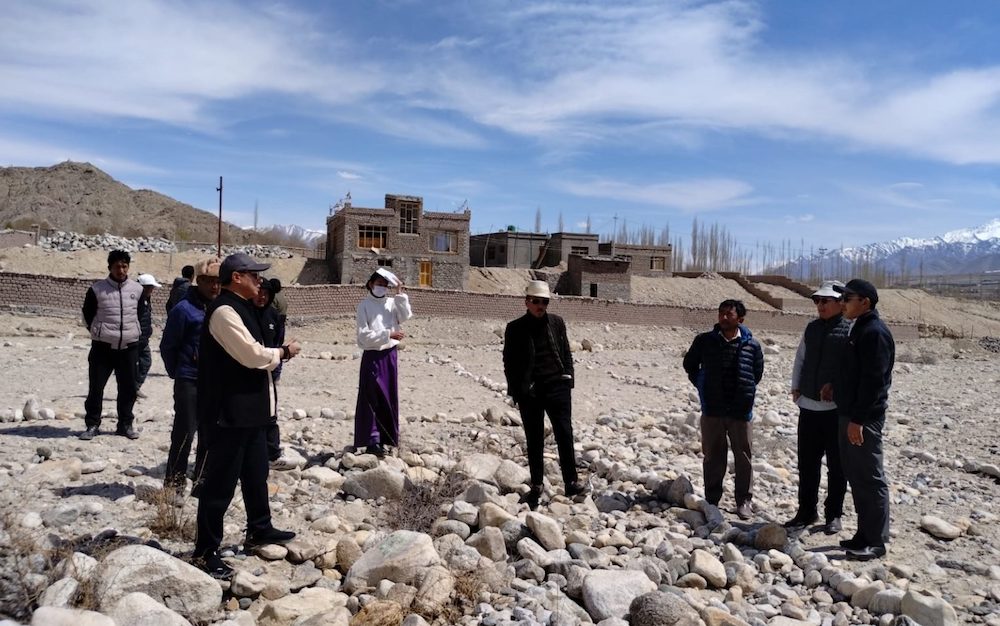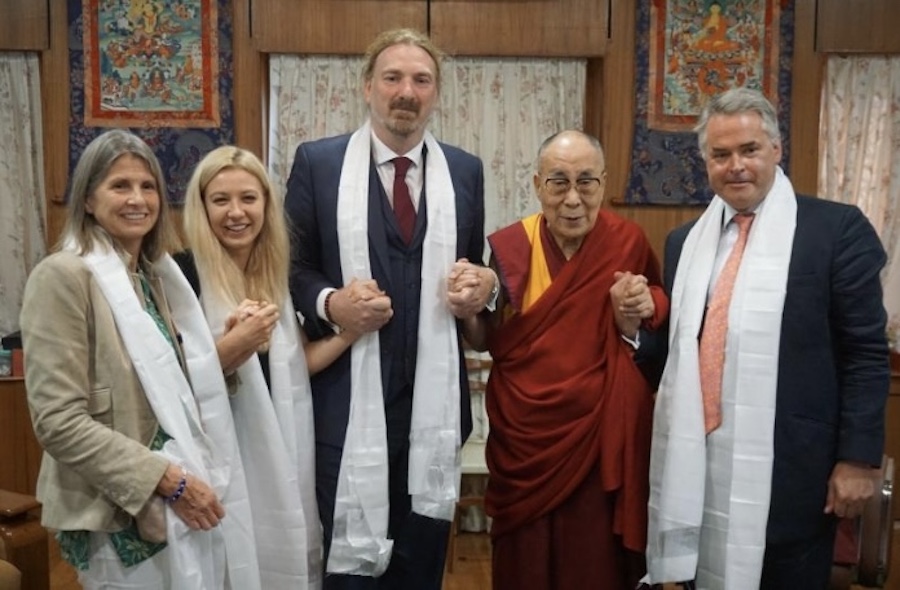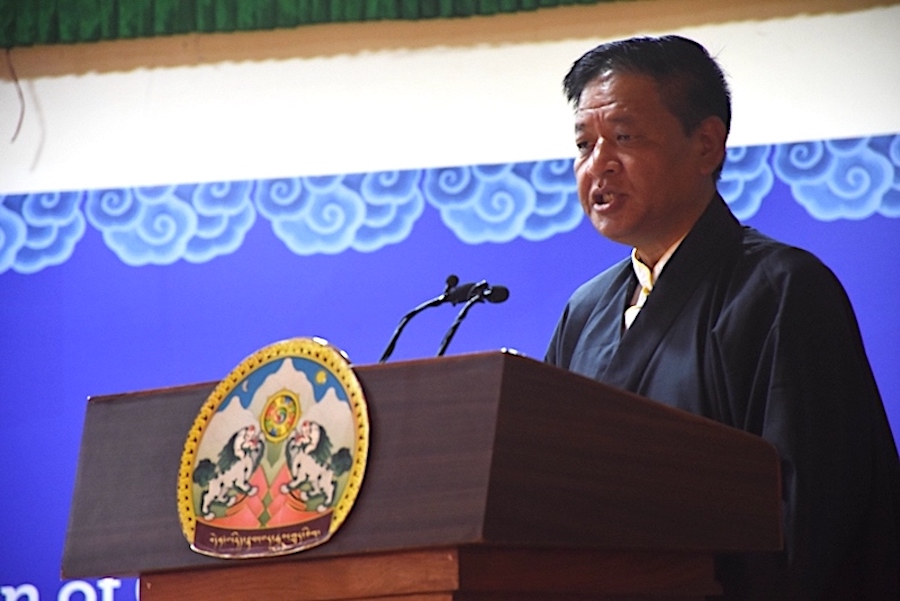Toronto community has boomed over the past five years Organizers prepare for the Dalai Lama’s visit in late April
By LESLIE SCRIVENER
FAITH AND ETHICS REPORTER
“You must come to my home for dinner,” says Tashi Dhondup. “It is the Tibetan way.”
Look up when you come to his apartment building, he says. You’ll see the prayer flags on the balcony. And there they are, fluttering in the night above Lake Shore Blvd. W., a connection to the home Dhondup longs for but has not known since he was 7.
Tibetans have found the city to be a haven. The population of exiles here has exploded, with a tenfold increase in the last five years, community leaders estimate.
About 3,000 Tibetans live here, many in Parkdale, most in the corridor of apartments on Jameson Ave. south of Queen St. W.
It’s a community with a history of suffering. Everyone has a story, if not of their escape from Tibet after the Chinese army’s occupation, which began in 1951, than of the flight of their parents or grandparents. Chinese leader Mao Zedong offered little choice: “Welcome the peaceful liberation or face armed liberation.”
They travelled by night and slept by day in the snowy mountain passes, hiding from Chinese soldiers. Many perished in the flight, leaving orphaned children who grew up stateless in India or Nepal. “This is not a movie,” says Norbu Tsering, head of the Canadian Tibetan Association of Ontario. “This is not a fairy tale. This is a real story.”
In Canada, they say, they have a future as citizens and the freedom to lobby politically on Tibet’s behalf. “Even after 44 years in Nepal, I was not a citizen, I had no passport,” says Dhondup, who has lived here for less than two years. “I have been my whole life a refugee. My children could not be citizens of Nepal unless their father was a citizen. What would my children be? Here in Canada, citizenship in three years. Forty-four years — nothing done. We have come for the children.”
Dhondup came from an aristocratic family in western Tibet, near Mount Everest, and was the hereditary head of the Nublung Community Monastery. In exile since he was 7, he lived in Kathmandu, Nepal, rising from a child carpet weaver to accountant to factory owner — the floors and sofas in his Toronto apartment are covered in carpets made in his factory.
He helped found health clinics and sports clubs, was a member of parliament for Kathmandu’s Tibetan community and president of the local Tibetan Freedom Movement. Before he left Nepal, he turned his home and factory over for use as a school that still bears his name. But in Toronto, Dhondup, 51, works in a factory, making belts. He has two children in college, one in high school and one working at a restaurant.
Above Dhondup’s piano sits a shrine, with pictures of deities and, in the centre, a photo of the Dalai Lama, who is coming to Toronto for 11 days of profound religious teaching called Kalachakra. Most Tibetans aspire to receive these spiritual lessons, taught by Buddha 2,800 years ago, once in a lifetime. “It’s become an important spiritual yearning,” says Thupten Jinpa, the Dalai Lama’s translator and head of the Institute of Tibetan Classics in Montreal.
The ceremony, performed often since the Dalai Lama went into exile in 1959, is believed to give a spiritual benefit over the area where it’s conducted.
(The Dalai Lama’s visit begins with a public talk on April 25 at SkyDome; check http://www.kalachakra2004.com or ticketmaster.ca for information and tickets, available soon.)
When it first moved in, the Chinese People’s Liberation Army portrayed Tibet as a feudal society in need of liberation; monasteries were destroyed, religious practices sharply controlled. In 1959, Tibetan resistance climaxed in a national uprising. The Dalai Lama’s compound was attacked by the Chinese army and he went into exile in India, where he heads the Tibetan Government in Exile from Dharamsala. Some estimates say that by 1979, 1.2 million had died under the occupation, and now there are more Chinese living in Tibet — approximately 7.5 million — than Tibetans.
For many exiled Tibetans — about 140,000 around the world, most living in India and Nepal — the Dalai Lama, their spiritual head, leader of the Tibetan community in exile and Nobel Peace Prize winner, is their link to that homeland.
“He is everything to us. Our pet name for him is `Jewel,’ our precious gem,” says Thubten Samdup, president of the Canada Tibet Committee. “Young Tibetans who have never been to Tibet have such a strong connection because of the Dalai Lama.”
They also have that connection because of Dhondup and others, who are working to help keep Tibetan language and culture alive. The most prominent characteristic of the Tibetan community here is its youth, says Rigzin Dolkar, part of the organizing committee for the Dalai Lama’s visit.
The first wave of Tibetans, several hundred of whom arrived in the early 1970s, was largely made up of older married couples with grown children. Recently, though, Tibetan refugees and immigrants have tended to be in their 20s or 30s. Some come ahead of their families, who join them once they get established.
On weekends at community centres and local schools, about 150 Tibetan children learn the language of their parents.
“Generations are passing and still we are refugees,” says Tsedon Jamatsang, preparing children for yesterday’s Tibetan New Year’s celebrations. “People are thinking more about food and shelter than preserving culture — that’s what makes things very delicate. If I give these children a biscuit, they’ll eat it and forget. If I give them culture, it stays from generation to generation.”
Jamatsang’s husband and teenage children are still in India, waiting to join her. In the meantime, she helps the children here — some, wearing chubas, the Tibetan national clothing, whirl around her, singing, “one day we will go back to Tibet, by the grace of God and His Holiness, the Dalai Lama.”
It’s also important to many Tibetan parents that their children marry other Tibetans — these Saturday language and dance classes are crammed with youngsters playing and speaking Tibetan together. Parents hope these gatherings will imprint the culture on their offspring.
“I want my kids to be proud they are Tibetan and they can only do that when they know the language,” says Tsering Wangyal, 34, an information technology administrator.
Though still a newcomer, Tashi Dhondup is already head of the Tibetan parents’ association here. He volunteers on weekends in Parkdale, helping out both children and adults. It’s vital to the future of Tibet, he says. “If we don’t stay together, tomorrow there will be no Tibetan community.”









